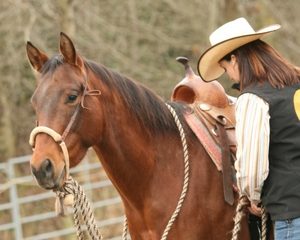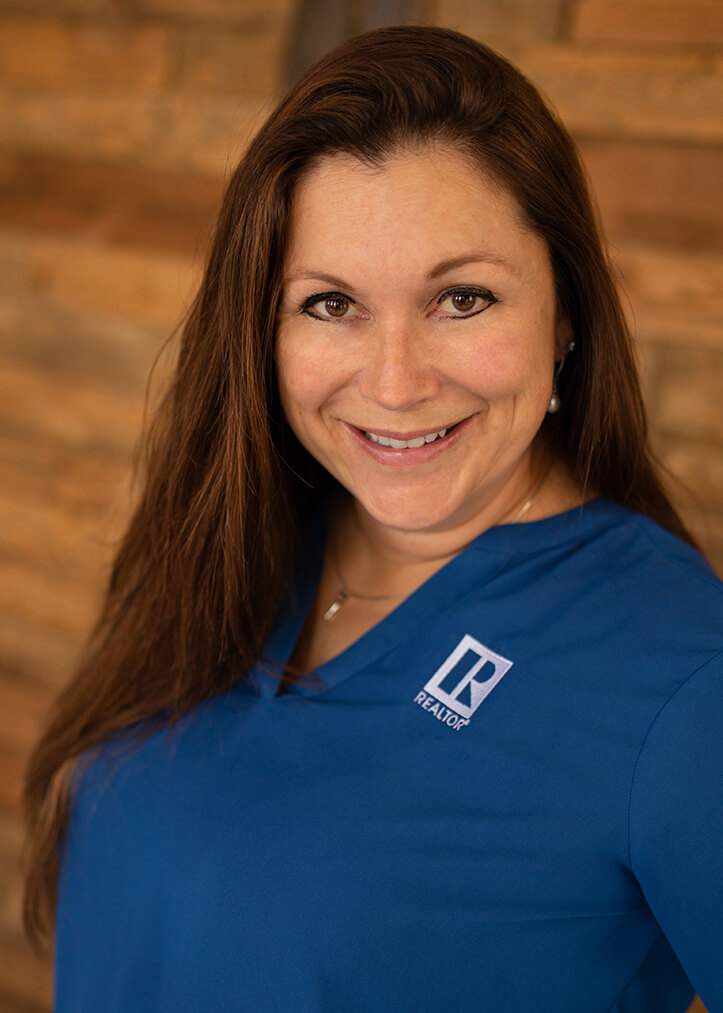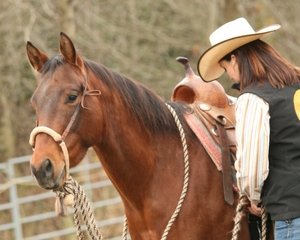Pay Attention to Tack, Horse, and Environment to Stay Safe
by Allison Trimble

In the previous months we discussed the philosophy of safety and horsemanship, and practical ground safety. This month we will consider basic safety in the saddle. Regardless of the level of horsemanship or intended discipline, the following are things to always consider before and while astride a horse.
Proper Attire: Each day, this is where safety starts. I touched on helmet usage in my first article, and I will re-emphasize both that I recommend helmets, but that I also insist on a higher standard of safety that comes from knowledgeable horsemanship. Another key element of safe attire is proper footwear. Boots should always have a heel to protect from slipping through the stirrup. In addition, they should be either a slip-on boot that will slip off if needed, or a slick bottom boot that prevents hang up in the stirrup. I prefer my boots to be both.
Tack and equipment: Any piece of equipment that will be in contact with the horse needs to be in safe working condition. This means free of debris, rips, or tears that could cause the bridle, saddle or pad to come loose or not properly function. A good example is the latigo strap that is starting to wear through at the D-ring. Another place that I see frequent malfunctions is Chicago screws on headstalls. It is important to either regularly check them for tightness, or use a tightening agent like lock-tight or even fingernail polish in the Chicago screw. I recommend using well maintained leather equipment, rather than a synthetic alternative, when possible.
Correct fit and function of tack is also important. Make sure the saddle, bridle, and any training equipment are properly adjusted and the horse accepts the equipment before getting astride. I often see people trying out new training equipment that puts them in harm’s way. I have twice, myself, had a horse catch their bottom jaw on the fork of a training martingale with scary results. I am a purist and use as few training aids as possible. I also have a pre-ride checklist that I mentally go through when I saddle a horse, which includes laying eyes on all equipment, on both sides of the horse, before mounting.
Readiness of the Horse: Each day judging the demeanor of the horse is key to a safe ride. A high level of “freshness” can negatively impact any ride. Before each ride I walk my horse to the arena, tighten the cinch again, and then send him around each direction. In 10 seconds I know if there is a negative reaction to any equipment, and how fresh my horse may be. I don’t leave it to chance and just hop on.
If a horse is too fresh, I suggest round-pen or lunging time. I can’t tell you how often wrecks could have been avoided if more attention was paid to the mindset of the horse.
No-Go: Behavioral issues such as bucking and rearing are a refusal of forward motion. The first thing a horse is taught is to go forward; this comes before steering and before stopping. Be mindful of a horse that refuses to go forward, address it immediately, or seek help from a professional before it grows to the dangerous level of bucking or rearing. The first time a horse bucks or rears, the solution is to enforce forward motion. It is much easier to keep this maintained before the serious behavioral issue takes hold, so stay vigilant about forward motion.
No-Whoa: No one would drive a car without brakes, but an alarming number of folks ride horses without them. The first issue with whoa is a horse who simply runs through the command. A horse that is running into the rider’s hands is at risk of stumbling due to front end heaviness and has an increased likelihood of running into, or through, a dangerous situation.
The equally risky horse is the lazy horse that has never had to learn whoa because the rider is always kicking them to go. There will be an occasion where the lazy horse gets excited and the rider will be surprised and possibly hurt because this horse never had a handle put on it.
Whether the horse is racy or lazy, the rider must know that it can be stopped if needed. Intentionally address the “whoa” in training before venturing out into the open, and seek the help of a professional trainer if needed.
I want to end with some general rules of thumb. Avoid distracted rides; be present at all times when working a horse. If that is not possible on a given day, perhaps it is a day to simply groom. Listen to internal alarm bells. If a situation feels unsafe, take an extra moment to observe and analyze potential risks. No ride is worth injury to horse or rider. Develop a safety routine and stick to it. This will help create consistency for the horse and help avoid a preventable safety incident.
Published in September 2016 Issue

Allison Trimble is a Realtor® specializing in equestrian properties, farm and ranch properties, and residential real estate. She’s a former horse trainer, and a current owner, breeder, and non-pro competitor in cow horse and reining events. For many years, Allison wrote a monthly column for The Northwest Horse Source.
Learn more at www.allisonblakerealestate.com








